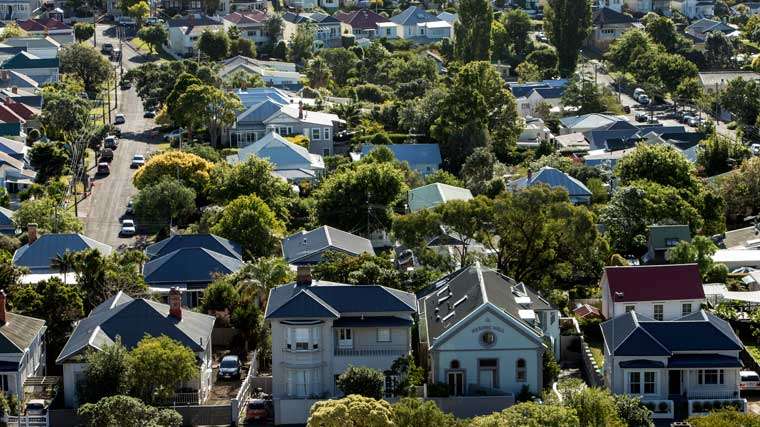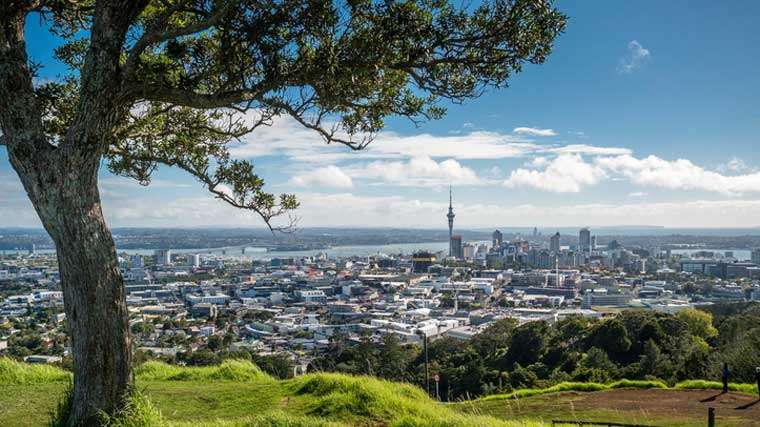Aucklanders may love greenery, but not enough to pay extra for it, new research shows.
A study by Auckland Council into what factors buyers value in suburbs found that development potential and proximity to jobs were more of an influence on house prices than the amount of trees and green spaces a particular suburb had.
Unlike other big cities around the world, Auckland is well served by trees, parks and reserves, with an Auckland home on the isthmus no more than 670 metres from a green space.
That means even modestly priced suburbs such as Ranui, Sunnyvale and Glen Eden, where median property values range from $655,000 to $715,000, according to the latest OneRoof Property Report, have as much canopy cover as the city's most expensive neighbourhoods.
Start your property search
Auckland’s three leafiest suburbs are Titirangi, which adjoins the Waitakere Ranges (68 percent canopy cover), Wade Heads (57 percent) and Chatswood (55 percent). That local board area, Kaipātiki has the highest cover at 30 percent.
Shane Martin, an economist at the council, said that the amount of tree canopy in an area is "not reflected in house prices, once other factors are accounted for".
"The wealthiest areas of Auckland have a lot of leafy, green suburbs, but even areas that have lots of industry like Rosebank, Penrose and Mt Wellington have almost 10 percent of canopy cover."
Sweet spot
He said leafy suburbs such as Herne Bay, Remuera, Parnell and Epsom are expensive because of other factors, such as desirable school zones and proximity to jobs and amenities.
He said houses on big sections in Business zones had the largest premium on land prices, because they have maximum flexibility. OneRoof research published earlier this year found that suburbs with the next highest land to house value ratio were predominantly in Auckland and had median property values are above $1.4 million.
Although the economists at Auckland Council found that greenery didn't have a huge impact on house prices, they did uncover a "sweet spot".
"On the isthmus, properties located right next to either schools or green space are valued less than those located a short distance away. For these amenities, there is a 'sweet spot' for value – not too close and not too far. Property values are maximised (all else held equal) 410 metres from green space, 590 metres from a school, and as close as possible to the coast."
Custom Residential agent Keith Dowdle says park are drawcard for his buyers.

Herne Bay has lots of trees but they don't push up house prices in the suburb.
More amenities and events, for example the bike ramps, playgrounds and annual festival in Grey Lynn park, have helped the parks become gathering and living spaces, not just greenery, he says.
“When you live in 300sq m or 400sq m section, then you rely on public places to walk the dog or the kids to run around,” he says. “In my corner of Freemans Bay you can link up through parks without actually going on the road, and that really adds to the local flavour.
“It’s even more so for apartment sales. Look at Williamson Ave at 8am and there are people and their dogs crossing [to the park] from all the neighbouring streets. With apartments now allowing pets, the park is a really important selling factor.”
International rankings
Auckland Council economists found that further out from the city, where schools and parks can be nine kilometres or more away, proximity to parks is more valued.
Bayleys agent Kirsten Bishop, who has been selling new developments on the city edge in Hobsonville Point and Long Bay, agrees being near a park attracts a real premium. At Hobsonville Point that means not only the parks and open spaces, including dog parks, but also the coastal walkway and cafes, restaurants and amenities clustered around the ferry terminal.
“When there’s intensive housing, the people make the most of getting out and about. It’s an eclectic mix of young families with kids constantly out walking, scootering, skateboarding. They really make the most of it," she says.
“And buyers downsizing to an apartment or a townhouse, it’s very much about the lifestyle, getting out and about to walk or bike and enjoy the green space. They don’t have to mow lawns.
“We also see a huge amount of people coming out from the city with their bikes to enjoy a complete day outdoors. Some of them then become residents.”
A recent ranking of major cities around the world picked Vienna and Singapore as the greenest, with 51 percent and 47 percent parks and green space. Sydney and Hong Kong came third and fourth. Auckland did not make the rankings.

Auckland homes are never more than 670 metres from a green space.
Auckland Council chief economist David Norman is sceptical of the results, pointing out that measurements are inconsistent and not comparable. For example, some rankings count parks and gardens, others add in tree-lined street canopies.
“I’ve been to 10 of the top 13 cities on the list and I’d be very surprised if any above New York are accurate reflections of actual green space (public parks and gardens). And probably not New York,” he says.
“For example, the list says Sydney is 46 percent green space. There’s no way this is green space,” he says, pointing to satellite images of the wider city. “If you limit the analysis to the CBD, there’s a big park [the Royal Botanic Gardens through to Hyde Park] that skews the figures.”
Norman says that Auckland’s 94,000 hectares of parks would probably compare quite favourably in a like-for-like measure of green space, but valid comparisons are hard.
“The evidence from August’s tree canopy work shows that canopy cover (different from green space cover) is sufficiently widespread that Aucklanders do not pay a discernible price premium to be in neighbourhoods with more canopy cover.”
Auckland’s over 5200 parks make up 20 percent of the city area, some 94,000 hectare. The median park size in the city is 0.6 hectares, while the mean park area is 18 hectares (that’s due to large regional parks and offshore islands). In addition, there’s over 1600 hectares of greenery from 40 golf courses, although a few are now slated for housing.
School zone influence
Bindi Norwell, chief executive at REINZ, says school zones are one of the biggest influencing factors on Auckland house prices: “Just last year a number of Auckland high schools ended out-of-zone enrolments, which put further pressure on already popular areas by further driving up prices.
"At the time, the Auckland region median price for the three months ending March 2018 increased by 21.4 percent over the past three years. Comparatively, looking at top school zones over the same period the median growth rates were as follows: Auckland Grammar, up 11.7 percent; Mount Albert Grammar School, up 23.7 percent; Rangitoto College, up 35.2 percent; Westlake Boys, 12.6 percent; Glendowie College, up 28.3 percent; Western Springs College, up 30.2 percent; and Macleans College, up 10.9 percent.
“For those outside of Auckland it’s often hard to understand just what lengths people will go to in order to move into a popular school zone, especially one that’s close to the city. But the reality is that school zones are a significant factor that contributes to many people’s decision in moving into area A over area B."










